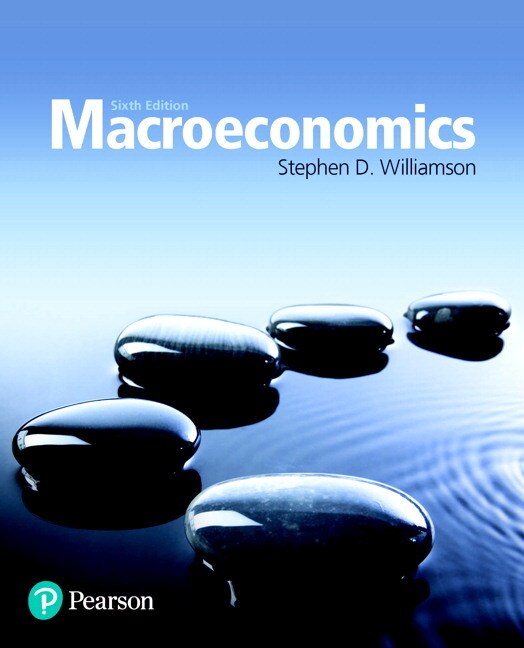
Macroeconomics, 6th edition
- Stephen D. Williamson

- Find it fast
Quickly navigate your eTextbook with search
- Stay organized
Access all your eTextbooks in one place
- Easily continue access
Keep learning with auto-renew
For courses in undergraduate Macroeconomics courses.
A modern approach to teaching macroeconomics
Macroeconomics uses a thoroughly modern approach by building macroeconomic models from microeconomic principles. As such, it is consistent with the way that macroeconomic research is conducted today. This approach allows for deeper insights into economic growth processes and business cycles–the key topics in macroeconomics. An emphasis on microeconomic foundations better integrates the study of macroeconomics with approaches learned in microeconomics and field courses in economics. By following an approach to macroeconomics that is consistent with current macroeconomic research, students become better prepared for advanced study in economics.
The 6th Edition captures the latest developments in macroeconomic thinking, applied to recent economic events and developments in macroeconomic policy. With the financial crisis receding, new challenges that macroeconomists and policymakers currently need to address are covered in the text.
Published by Pearson (July 14th 2021) - Copyright © 2018
ISBN-13: 9780137538201
Subject: Economics
Category: Intermediate Macroeconomics
Table of Contents
Part 1: Introduction and Measurement Issues
- Introduction
- Measurement
- Business Cycle Measurement
Part 2: Basic Macroeconomic Models: A One-Period Model and Models of Search and Unemployment
- Consumer and Firm Behavior: The Work–Leisure Decision and Profit Maximization
- A Closed-Economy One-Period Macroeconomic Model
- Search and Unemployment
Part 3: Economic Growth
- Economic Growth: Malthus and Solow
- Income Disparity Among Countries and Endogenous Growth
Part 4: Savings, Investment, and Government
- A Two-Period Model: The Consumption–Savings Decision and Credit Markets
- Credit Market Imperfections: Credit Frictions, Financial Crises, and Social Security
- A Real Intertemporal Model with Investment
Part 5: Money and Business Cycles
- Money, Banking, Prices, and Monetary Policy
- Business Cycle Models with Flexible Prices and Wages
- New Keynesian Economics: Sticky Prices
- Inflation: Phillips Curves and Neo-Fisherism
Part 6: International Macroeconomics
- International Trade in Goods and Assets
- Money in the Open Economy
Part 7: Money, Inflation, and Banking
- Money, Inflation, and Banking: A Deeper Look